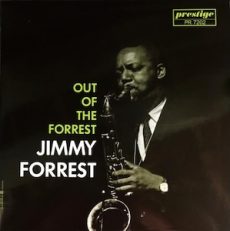
Requisites
Out Of The Forrest ~ Jimmy Forrest | By Eddie Carter
This morning’s spotlight shines on Jimmy Forrest, whom I first heard on the 1960 release, “Soul Battle,” with King Curtis and Oliver Nelson. Out of the Forrest (Prestige PRLP 7202) was his fifth outing as a bandleader and hit the stores in 1961. Jimmy was born in St. Louis, Missouri and built his reputation with the Count Basie, Duke Ellington, Andy Kirk, Fate Marable, and Jay McShann bands. Forrest demonstrated impressive versatility on the tenor sax, delivering energetic solos at brisk tempos. He also infused the lively pulse of bop at a medium beat, and he poured deep emotion into every ballad or standard. On this date, he’s supported by Joe Zawinul on piano, Tommy Potter on bass, and Clarence Johnston on drums.
My copy of the album is the 2023 Analogue Productions U.S. stereo audiophile reissue, matching the original catalog number. Side One opens with Bolo Blues, an original by Jimmy Forrest, which was one of his biggest hits. His relaxing introduction sets the melody off to a comfortable groove. The saxophonist has the solo spotlight to himself and delivers a thoughtfully crafted, laid-back interpretation, leading to the theme’s reprise and climax. The beat moves upward for the jazz and pop standard, I Cried For You, by Gus Arnheim, Arthur Freed, and Abe Lyman. Forrest’s brief introduction quickly segues to the ensemble’s medium theme. Jimmy goes to work first with a sparkling solo. Zawinul responds with a performance as refreshing as a cold drink on a hot day until the melody’s restatement and close.
I’ve Got a Right to Cry by Joe Liggins is a beautiful ballad beginning with a delicately expressive introduction by the quartet that continues as the melody unfolds. Jimmy, again, is the lone soloist and awakens poignant memories in a tenderly passionate interpretation before the theme’s return leads to a soft ending. This Can’t Be Love by Richard Rodgers and Lorenz Hart has long been a favorite of jazz musicians and vocalists. The trio’s introduction develops nicely into the ensemble’s lively theme. Forrest takes the first solo with stunning precision and enthusiasm on each note. Zawinul gets the last word and gives an excellent account before the theme is restated.
Side Two gets underway with By the River Sainte Marie by Edgar Leslie and Harry Warren. The rhythm section’s introduction segues into the quartet’s medium melody. Jimmy’s opening statement swings with a joyful spirit. Tommy takes a short, satisfying walk in his first solo next, then the leader makes his return for a concise comment leading to the finale. The quartet takes a nostalgic trip back in time with Yesterdays by Otto Harbach and Jerome Kern. Forrest’s gentle introduction sets things in motion for the foursome’s melody. Jimmy is the song’s only soloist, and his reading is very intimate, complemented by the rhythm section’s tender accompaniment ahead of a soft summation.
Crash Program by Jimmy Forrest and Clarence Johnston is off and running from the outset of the ensemble’s rapid theme. The saxophonist flies out of the gate with a flawlessly executed burst of speed. Joe continues soaring with infectious energy in the following solo. Johnston rounds things out with a swift finale, before the quartet returns to the theme and a quick exit. The album ends with a gorgeous rendition of That’s All by Alan Brandt and Bob Haymes. The pianist’s concise introduction sets the mood for Forrest’s sultry theme and elegantly phrased opening solo. Zawinul has a lovely interlude of tenderness preceding the leader’s return to take the song out softly.
Esmond Edwards supervised the initial session, and Rudy Van Gelder expertly managed the recording dials. Kevin Gray mastered this audiophile reissue from the original tapes at Cohearant Audio. The record was pressed on 180-gram vinyl and is dead silent until the music begins. The album’s sound quality is sensational, with an outstanding soundstage placing your sweet spot in the studio with the musicians. Out of the Forrest impresses not only from the music itself but also from the exceptional support of the ensemble. If you’re in the mood for a top-tier quartet and enjoy the tenor sax, I highly recommend Out of the Forrest by Jimmy Forrest for a spot in your library. If you’re a newcomer to his music, this album is a fine place to start your journey!
~ Soul Battle (Prestige PRLP 7223/PRST 7223) – Source: Discogs.com
~ I Cried For You, That’s All, This Can’t Be Love, Yesterdays – Source: JazzStandards.com
>© 2025 by Edward Thomas Carter
More Posts: choice,classic,collectible,collector,history,instrumental,jazz,music,saxophone
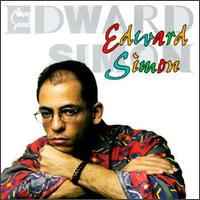
Daily Dose Of Jazz…
Edward Simon was born July 27, 1969 in Punta Cardón, Venezuela and when he was ten years old came to the United States to study at the Performing Arts School in Philadelphia, Pennsylvania. After graduating, he attended the University of the Arts in Philadelphia, where he studied classical piano, then the Manhattan School of Music, where he studied jazz piano.
In 1988, he recorded as a sideman with Greg Osby, then worked as a member of the band Horizon led by Bobby Watson. For the next eight years he was a member of Terence Blanchard’s band. He has also worked with Herbie Mann, Paquito D’Rivera, Bobby Hutcherson, Jerry Gonzalez, John Patitucci, Arturo Sandoval, Manny Oquendo, and Don Byron.
Simon recorded Beauty Within in 1994), his debut album as a bandleader, with Horacio Hernández and bass guitarist Anthony Jackson. That same year, he was a finalist in the Thelonious Monk International Jazz Piano Competition. Then the following year he composed Rumba Neurotica for the Relache Ensemble.
In 2003 Simon formed Ensemble Venezuela to combine jazz with the music of Venezuela. Given a commission by Chamber Music America to write Venezuelan Suite and recorded the album in 2012 with musicians from Venezuela, Colombia, and the U.S. He has played on several Grammy-nominated jazz albums. Besides his trio he leads the Sexteto Venezuela, the Afinidad Quartet, and the group Simon, Simon, & Simon with his brothers.
Wearing his educator hat he has taught at the New School for Jazz and Contemporary Music in New York City and has been artist in residence at Western Michigan University.
Pianist and composer Edward Simon continues to perform, compose and record.
More Posts: bandleader,compose,educator,history,instrumental,jazz,music,piano
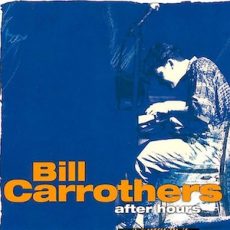
Daily Dose Of Jazz…
Bill Carrothers was born July 13, 1964 in Minneapolis, Minnesota. He began playing piano at age five, studying with his church organist before learning jazz from pianist Bobby Peterson. By age 15 he was performing in jazz clubs, and in 1982 he briefly attended North Texas State University.
After a year at North Texas, Carrothers was a member of Irv Williams’ band before a move to New York City in 1988. He performed at the Knitting Factory, The Village Gate, and Birdland as well as Blues Alley in Washington, D.C. He has worked with Buddy DeFranco, Curtis Fuller, Billy Higgins, Freddie Hubbard, Lee Konitz, James Moody, Gary Peacock, Dewey Redman, Charlie Rouse, James Spaulding, Terell Stafford, Toots Thielemans, and Prince.
He has performed in France, Belgium, Germany, Austria, and Switzerland. In 2009 Bill played a week-long stand at the Village Vanguard with his European trio Nicolas Thys and Dre Pallemaerts, which resulted in a 2011.
He performs solo piano concerts, made his Monterey Jazz Festival debut and is a regular on the Chicago scene. He is an adjunct professor at Lawrence University in Wisconsin. Carrothers was awarded the Grand Prix du Disque for Jazz in 2004 and was nominated for the Les Victoires du Jazz, twice.
Pianist and composer Bill Carrothers, who has cited Clifford Brown, Shirley Horn, and Oscar Peterson as influences on his development as a musician, continues to perform without shoes to better feel the piano pedals, sitting in a chair to achieve his preferred seating height.
More Posts: bandleader,composer,history,instrumental,jazz,music,piano
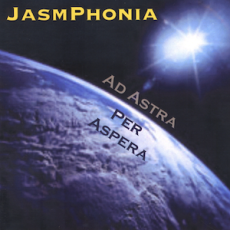
Daily Dose Of Jazz…
Eric Soleil was born July 9, 1961 on the wind-swept plains of the Kansas prairie and began his musical career in elementary school where he was forced to play the trumpet that was handed down from his older brothers. He infuriated his band instructor by making up his own parts instead of playing the fourth-chair lines intended for him. He also began to compose little pieces on the family’s upright piano. In high school, Eric pursued concert choir and the thespian arts, earning a theater scholarship to college. At 19 years of age, he began studying the electric bass.
Deeply rooted in classical music, he also had an adoration for American jazz, which led to incorporating classic orchestral voices with some neo-Baroque, jazzified idioms that became Jazz-Symphonia. He later played the baritone, french horn, trombone, finally settling on the tuba where he remains an inveterate bass clef performer.
A unique blend of symphonic instruments with jazzy undertones, JasmPhonia is the nom de guerre of Eric, a gifted multi-instrumentalist/composer who utilizes acoustic symphonic voices and midi composition to create a rich mixture of chamber music and Nu-jazz styling. Eric has compiled his first CD, “Ad Astra Per Aspera” (To The Stars Thru Difficulty).
Tubist Eric Soleil continues to pursue a career in music, writing from the keyboard, drums, and bass, and performing his own unique original compositions. He is also continuously developing his skills as an artist, producer, and engineer.
More Posts: bandleader,bass,drums,engineer,history,instrumental,jazz,keyboard,music,producer,tuba
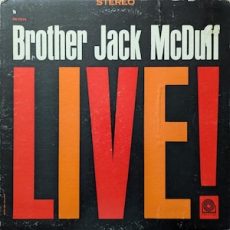
Requisites
Live! ~ Brother Jack McDuff | By Eddie Carter
Three cherished family members inspired this morning’s discussion. My mom, Merlyn Carter, introduced my sister and me to Brother Jack McDuff during our Sunday dinners when we were younger; my uncles, Benjamin and Emmanuel Curry, often featured this album at their weekend jazz gatherings. Offered now for your consideration is his 1963 release and first concert performance, Live! (Prestige PRLP 7274/PRST 7274). (Prestige PRLP 7274/PRST 7274). This album captures the organist igniting a lively crowd at The Front Room in Newark, New Jersey, joined by his stellar quartet: Red Holloway on flute (track B1) and tenor sax (tracks A1 to A3, B2, B3), George Benson on guitar, and Joe Dukes on drums. My copy of the album is the 1964 U.S. stereo reissue.
The announcer’s introduction gets the set off to a roaring start with Rock Candy by Jack McDuff. The quartet’s infectiously spirited theme segues into Red’s vigorous opening statement. A swinging interlude is succeeded by George’s lively solo ahead of the foursome’s second interlude. Brother Jack states his case in fine form before the theme’s closing chorus, and Jack speaks to the crowd. The tempo eases as the foursome takes on George and Ira Gershwin’s It Ain’t Necessarily So. Benson and Dukes’ soulful warmth paves the way for McDuff’s down-home melody that whets the appetite for more. George pays his respects in the opening solo, then Red compliments him with a bluesy, slow-cooked groove, preceding McDuff’s theme reprise fading softly into Jack’s introduction of the next tune.
The group ushers us into Jack McDuff’s Sanctified Samba, launching the soulful gathering with an irresistible, bossa-nova tinged beat that calls the congregation to worship. George begins with a lively, melodic progression that builds to a satisfying climax. Jack delivers a stream of inventive ideas with characteristic ease next. Red wraps up the readings, blending bluesy flair with smooth, expressive lines before the group unites for a rousing conclusion. Side Two starts with Whistle While You Work, by Frank Churchill and Larry Morey from Disney’s “Snow White and the Seven Dwarfs.” Red opens the whimsical melody on flute, then steps aside for McDuff to take two happy solos with Benson’s cheery statement sandwiched in between them, leading back to the ending theme.
Jack shares the story behind his blues, A Real Good’un, and then the organist’s introduction segues into the quartet’s home cooking during the melody. Benson comes to the table first, serving up a platter of appetizing notes. After the first of several short interludes, Holloway brings the musical equivalent of red beans and rice to the table. McDuff adds a generous helping of fried chicken and mac and cheese before the group wraps up the song on a tasty note. The set concludes with Undecided, by Sid Robin and Charlie Shavers. The ensemble’s brisk introduction and catchy melody open the door for McDuff to deliver a swinging solo. Holloway maintains the momentum in a peppy interpretation. Benson plays with energetic finesse, then Dukes has the last word preceding the spirited closing chorus.
>Produced by Lew Futterman and Peter Paul, this live session captivates listeners from the very first note. Though the identity of the recording engineer remains a mystery, the album’s sound places listeners right in The Front Room, giving them the sense of being part of the lively crowd. The energy of the performances is infectious, and it’s nearly impossible not to snap your fingers, tap your feet or get up and dance along. Throughout his career, Jack McDuff masterfully fused hard bop, R&B, and soul jazz, drawing out the best from his fellow musicians at every turn. If you’re a jazz organ fan seeking an album that’s vibrant and uplifting, Live! by Brother Jack McDuff is a top recommendation for your library. It’s the perfect soundtrack to relax after a busy day or week, and is guaranteed to brighten your mood!
~ It Ain’t Necessarily So, Whistle While You Work – Source: Wikipedia.org
© 2025 by Edward Thomas Carter
More Posts: choice,classic,collectible,collector,history,instrumental,jazz,music,organ




